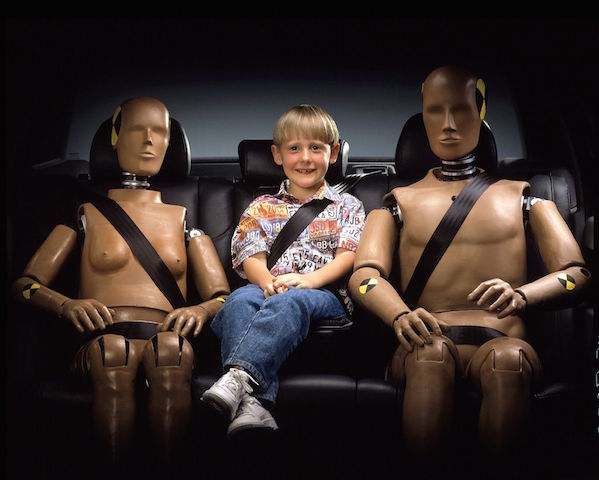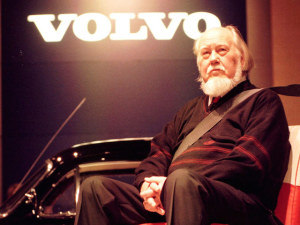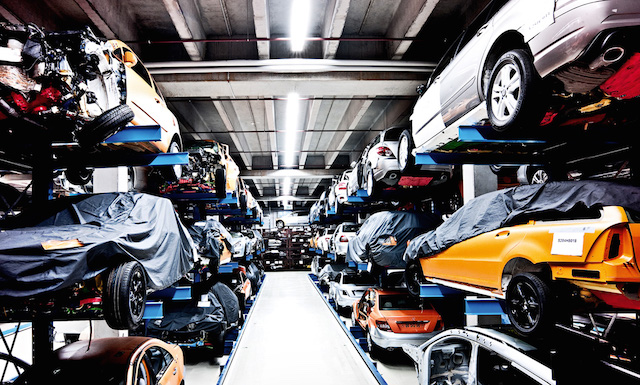
It’s 50 years since three-point seatbelts were needed to be fitted to the front seats of cars and light vehicles in New Zealand – and 40 years since driver and front passenger were required by law to wear them.
Cars registered after January 1, 1965, had to be fitted with front seatbelts, but it wasn’t compulsory to wear them until 10 years later. Between times, New Zealanders either wore them, sat on them, or left them dangling from a hook on the B-pillar.
From January 1, 1975, occupants up front by law had to buckle up. Parliament in 1972 had given motorists three years’ notice of the need. Failing to do so risked a fine, it said. As it turned out, the fine was $8.00 for a first offence.

Motorists were told again in 1975 that, from 1979, seatbelts had to be fitted to the back seats. But it wasn’t until 1989 that it became compulsory for rear passengers to wear them.
Evidence 40-50 years ago that seatbelts saved lives was incomplete. British research in the 1960s claimed the restraints could save 1000 lives and 10,000 injuries a year. On the other hand, a Detroit motor executive told a Senate inquiry in the US in the same decade that seatbelts were bunkum.
An engineer, he reckoned he could prevent passengers on the front bench seat of his car from being thrown forward in an accident by simply reaching across with his free arm and holding them back. He obviously didn’t major in physics. Back then the US road toll was upwards of 44,000 fatalities a year.
New Zealand was an early adopter of seatbelt laws, a year after Japan (1971) and two after Australia (1970). In Germany, wearing them wasn’t compulsory until 1976, although they needed to be fitted after 1970. The UK made their use compulsory in 1983.
The US Federal Government acted in 1984, almost 20 years after it made Detroit’s Big Three fit front lap belts to cars. Many US State governments made up their own rules on seatbelts. They still do. In New Hampshire, for example, occupants over 18 years of age in the car don’t have to wear them. Italy didn’t do anything about seatbelts front or back until 1989. The European Union made everything about seatbelts compulsory in 1993.
Research over the past 30-40 years has shown seatbelts are lifesavers. Indeed studies in the UK after 1983 revealed a 25 per cent reduction in driver fatalities and 29 per cent in fatal injuries among front seat passengers.
Here’s a brief history of significant car safety features and what’s to come.
1959: Seatbelt. Volvo fits the first three-point seatbelt, invented by one of its engineers, Nils Bohlin.
1960: Padded dashboard. Another innovation from Volvo, in an attempt to reduce face and chest injuries in crashes.
1966: Anti-lock brakes. The British-made Jensen FF becomes the first production car to feature mechanical anti-lock brakes, based on aircraft technology.
1968: Head restraints. Volvo delivers another first, with front-seat head restraints. These protect the head and neck in rear-end collisions.
1975: Seatbelts. In New Zealand, front seat occupants by law have to buckle up.
1978: Electronic anti-lock (ABS) brakes. Mercedes-Benz moves the safety game along by introducing an electronic system in its premium S-Class sedan.
1979: Seatbelts. Back seat restraints must be fitted to all cars sold in New Zealand.
1981: US carmakers sold airbags in the 1970s, but Mercedes-Benz is first to install a modern Supplemental Restraint System (SRS).
1989: Seatbelts. Back seat passengers in New Zealand by law have to buckle up.
1991: Side-impact protection. Volvo combines side-impact bars with seats on transverse rails to create its Side Impact Protection System (SIPS).
1994: Side-impact airbag. Once again, Volvo is at the forefront of safety as it introduces side-seat protection airbags in its 850 model to supplement its metal side-impact bars.
1995: Electronic stability control. Mercedes-Benz, with the help of Bosch, becomes the first maker to use ESC, with the S-Class again leading the way.
1996: Knee airbag. South Korean carmaker Kia adds the first knee airbag to the Sportage SUV, although the feature reaches some markets earlier than others.
1996: Euro NCAP established. The first Euro NCAP meeting takes place, with the crash testing body’s first results released the following year.
1997: First NCAP results. Volvo S40 comes top with four stars for adult occupant protection.
1998: Active head restraints. Saab offers across its model range a more advanced version of Volvo’s 1968 system.
2001: First five-star crash result. The Renault Laguna becomes the first car to be awarded the maximum points for overall safety.
2003: Child safety rating. NCAP’s safety test is made even tougher by the introduction of the child protection rating.
2005: Lane departure warning. It first appears in Europe on the Citroen C4, C5 and C6 and warns drivers when their car is moving out of a lane.
2005: Pop-up bonnet. Developed to lower the risk of injuries for pedestrians when hit by a car. First available on the Jaguar XK Citroen C6.
2007: Blind spot monitoring. The Volvo S80 offers a visual alert to notify drivers of vehicles in their blind spots.
2008: Autonomous braking. Introduced on the Volvo XC60. The system senses stationary traffic, warns drivers and primes the brakes to stop. (Ed: I went to the launch of the system).
2008: More safety tests. Euro NCAP releases results on its first rear impact (whiplash) protection test.
2009: New NCAP rating. Stricter rating is a score for adult occupant, child occupant, pedestrian and safety assist. Cars without stability control as standard can’t get five stars.
2014: More ratings. NCAP brings in further changes.
2015: Advanced safety systems. The new Volvo XC90 can spot pedestrians in the dark, and steer away and/or brake if the driver veers towards an obstacle. Its active cruise control follows the car ahead and lane markings.
2018: Car2Car communication. Cars communicate with those in front and warn of slippery roads or a breakdown in the way. Also works with traffic lights to tell you how long before it turns green.

